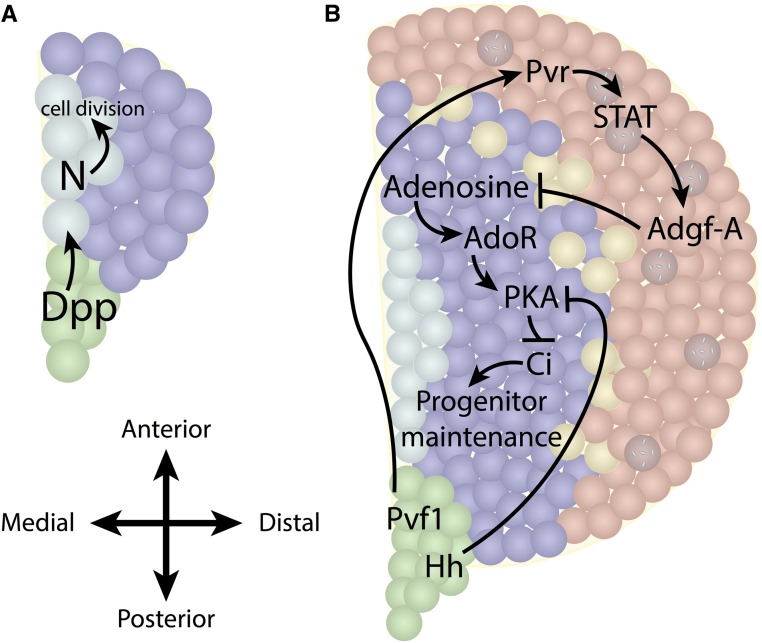Figure 5.
Interzonal signaling. (A) During the first instar, a Dpp signal originates from the PSC and activates the Notch pathway by an unknown mechanism in 5–8 preprogenitor cells along the medial edge of the primary lobe. The preprogenitors are domeless−, proliferate, and give rise to the Domeless+ progenitors of the MZ. (B) Late second instar onward, the PSC secretes both Hh and Pvf1, which are needed to maintain progenitor quiescence. The niche-derived Hh signal is important for generating an active version of Ci (CiACT) in the MZ. The Pvf1-derived signal is sensed by the cells of the CZ, which trigger a molecular cascade known as the equilibrium signal that also further enhances the stability of CiACT in the MZ. The combination of the niche-derived Hh signal and the equilibrium signal arising from newly differentiated cells together maintain a progenitor cell population that is adaptable to both homeostatic and stress-induced conditions. All arrows represent genetic regulation and not necessarily direct molecular steps within a transduction cascade. Adgf-A, Adenosine deaminase growth factor-A; AdoR, adenosine receptor; Ci, Cubitus interruptus; CZ, cortical zone; Dpp, Decapentaplegic; Hh, Hedhehog; MZ, medullary zone; PSC, posterior signaling center; Pvr, PDGF/VEGF receptor.

